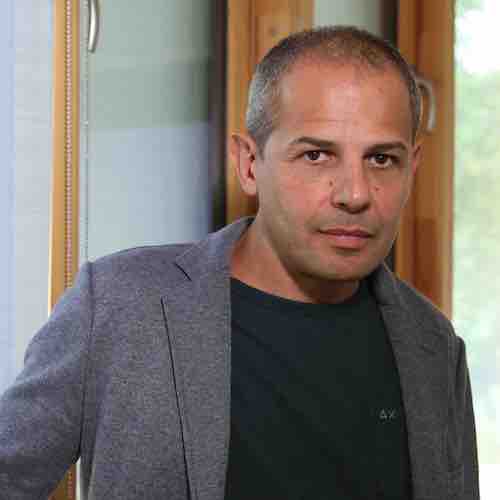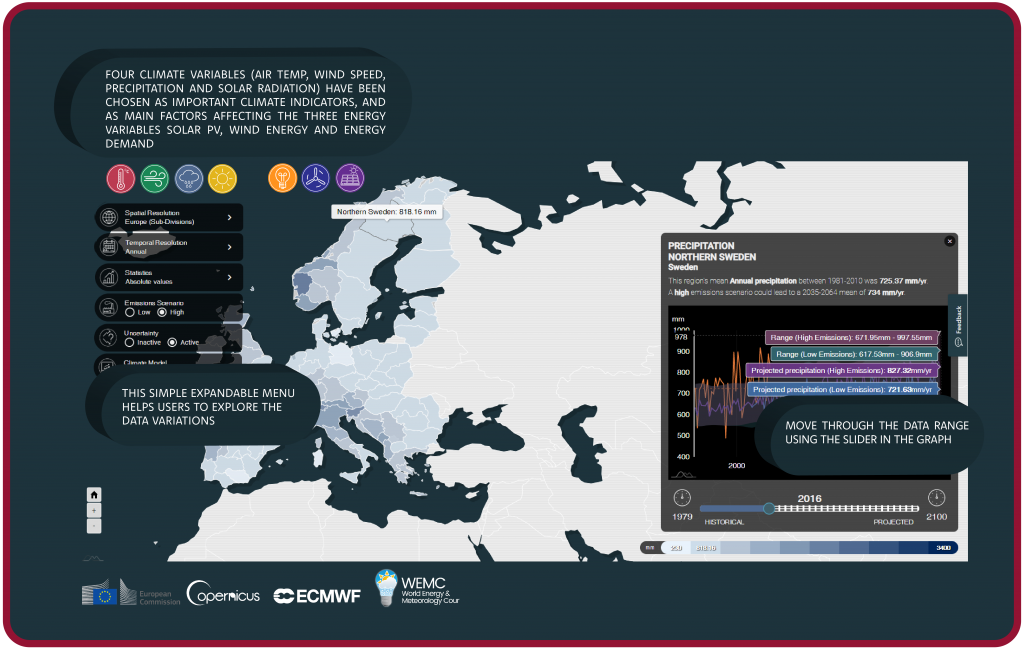Get educated on Climate Change: A smart data visualisation tool for schools
How the C3S Education Demonstrator works with your school curriculum to introduce younger people to the climate change and energy conversation.
Climate change is an increasingly significant global challenge. At COP25, the Climate Conference hosted by Spain in December 2019, we heard Teresa Ribera, Spain’s acting minister for the ecological transition, tell delegates: “…we have committed ourselves to announcing long-term cohesive strategies to achieve climate neutrality by 2050”. And the EU heads of state also met and agreed to make the bloc ‘climate neutral’ too, including a European Green Deal to help countries move to renewable energy sources.
Millions of young people across the globe are engaging in the climate and energy conversation at every level. Questions like, ‘What is climate change?’, ‘What are the impacts of climate change?’, and ‘How can we mitigate and adapt to climate change?’ are prevalent in schools. But it isn’t a straightforward topic. Thankfully, data visualisations of climate change such as the Copernicus Climate Change Service (C3S) Education Demonstrator, can help answer some of the questions they have.
“We have created a more accessible application for wider audiences beyond climate scientists and sector experts. It’s not easy to access user-friendly, objective and honest data and information which features no emotional influence. But our Education Demonstrator does just that. It offers high school students a great opportunity to easily explore first-hand how our climate is changing in a way that tries to match the school syllabus.”
Professor Alberto Troccoli, Managing Director, WEMC
Built on the wealth of reliable, scientific climate and energy data produced through the C3S ECEM Demonstrator, this new C3S Education Demonstrator is an interactive Climate and Energy Comparison tool to help address climate change through education. Together with the school curriculum, it gives students a chance to explore how the European climate has changed and is projected to in the future. And considering 84% of young people agree that they need more information to prevent climate change, and that 75% of teachers feel they don’t have adequate training to educate them, the C3S Education Demonstrator is a well-timed tool.
“In the classroom, young people can be taught the impact of global warming and learn how to adapt to climate change. Education empowers all people, but especially motivates the young to take action.”
UN and Climate Action
The education and awareness of climate change so far has led to youth movements such as ‘Fridays for Future’, as well as multiple marches and strikes. It’s even resulted in the very first Youth Climate Summit in New York late last year which bought youth climate champions from over 140 countries and territories together to share solutions on a global stage. This is proof that being educated on the topic gives younger people the confidence to raise their voices and speak up for the future of the earth – the C3S Education Demonstrator is a credible way you can help begin their climate and energy schooling.
What is the C3S Education Demonstrator?
The C3S Education Demonstrator allows non-technical users to explore scientific climate and energy data in a visual way across an interactive map of Europe. The tool uses robust historical data ranging from 1979 up to 2016 (soon to be updated and extended) and offers projected data up to 2100 for comparison.
The map and graph can be adjusted using the climate and energy variables in the functionality menu. Users can also move through the data range using the slider in the graph. All this combines into a visual tool with which users can engage at whatever level they want. Here are some examples of how it could help:
How can I learn about extreme climatic events?
The C3S Edu Demo shows year-to-ye ar, season-to-season and month-to-month behaviours. And the climate variables display historical daily values too. This allows you to pinpoint extreme climatic events – such as the 2003 European heat wave – which can be displayed through the map and time series to help you learn about their evolution. What’s more, you can also see how wind, solar power, and energy demand were impacted by these events.
ar, season-to-season and month-to-month behaviours. And the climate variables display historical daily values too. This allows you to pinpoint extreme climatic events – such as the 2003 European heat wave – which can be displayed through the map and time series to help you learn about their evolution. What’s more, you can also see how wind, solar power, and energy demand were impacted by these events.
Which areas of Europe are more suitable for solar energy?
 A unique feature of the tool is that it relates climate variables with power indicators. For instance, it’s possible to use the climate and energy variables and functionality menu to display how solar radiation and air temperature vary across Europe. When these specific variables are combined in the tool, you get an indication of the optimal geographical distribution of solar power.
A unique feature of the tool is that it relates climate variables with power indicators. For instance, it’s possible to use the climate and energy variables and functionality menu to display how solar radiation and air temperature vary across Europe. When these specific variables are combined in the tool, you get an indication of the optimal geographical distribution of solar power.
“The awareness of global issues relating to climate and more, in my 10 years of teaching is definitely a lot more, students want that information. The tool gives that visual impact, you cannot hide the fact that those temperatures are rising.”
Frances Billin, Head of Geography, Attleborough Academy.
“It’s easier to see the change … it’s more detailed and better for research … The individual year function helps us see if any particular event affected our climate more than others.”
Millie and Eloise, Year 10 Students, Attleborough Academy.
The innovation of the C3S Education Demonstrator allows more people to actually see the differences in the European climate and energy for themselves using robust scientific data. They can see how temperatures have risen, how precipitation has increased, how energy use has changed, and they can even view projections of what could happen if these trends continue.
Many users are already finding this a very useful tool, including educators and other climate or energy enthusiasts, and WEMC are committed to improving the functionality over time through workshops and user consultations. The first of these sessions was held in January 2020 with a second in March 2020 for those interested in getting involved.
Future-proofing our world
Going forward, there are exciting plans to upgrade and expand the C3S Education Demonstrator to include new features that users have requested, including more global data from Africa, Asia and more. And it’s all because WEMC is committed to generating a globally-useful and friendly data visualisation tool – especially with the urgency of the climate change problem. It’s for this reason that WEMC is always looking to accelerate development through collaborations, support from donors and from industry feedback.
Meanwhile, this valuable tool for students, educators and anyone interested in learning about climate change facts across Europe, is available to use for free. It can help teachers lead the way into the climate and energy conversation and motivate young people to better understand the issues. And that’s exactly what will help transform our societies towards a low-carbon and climate resilient future.








